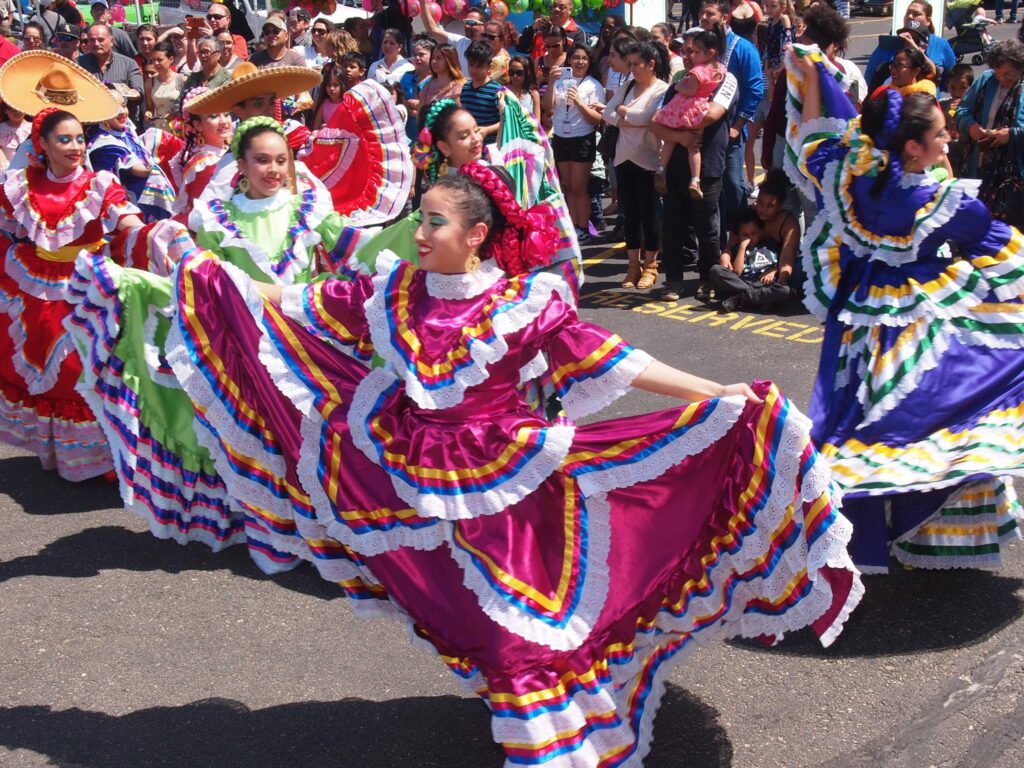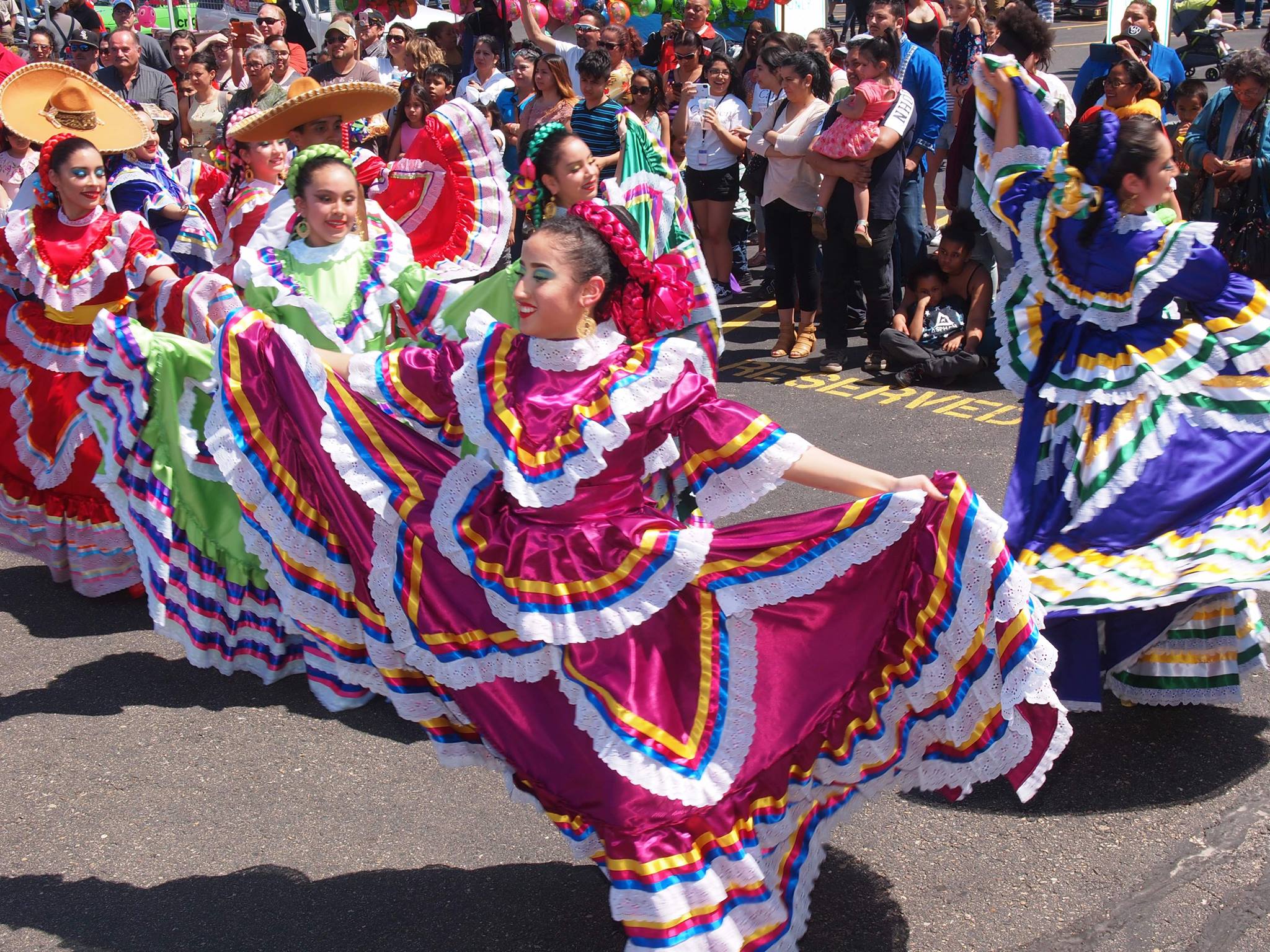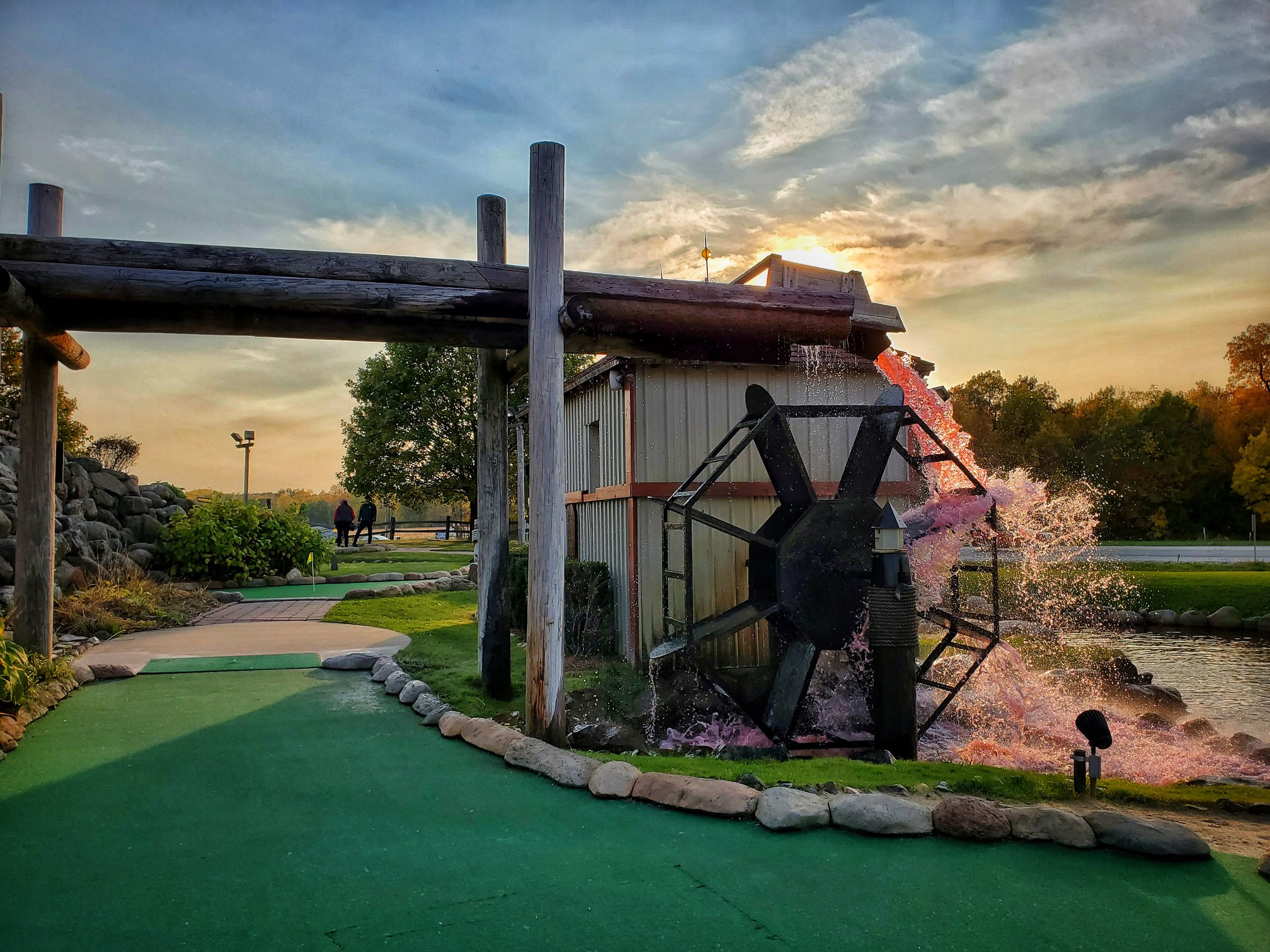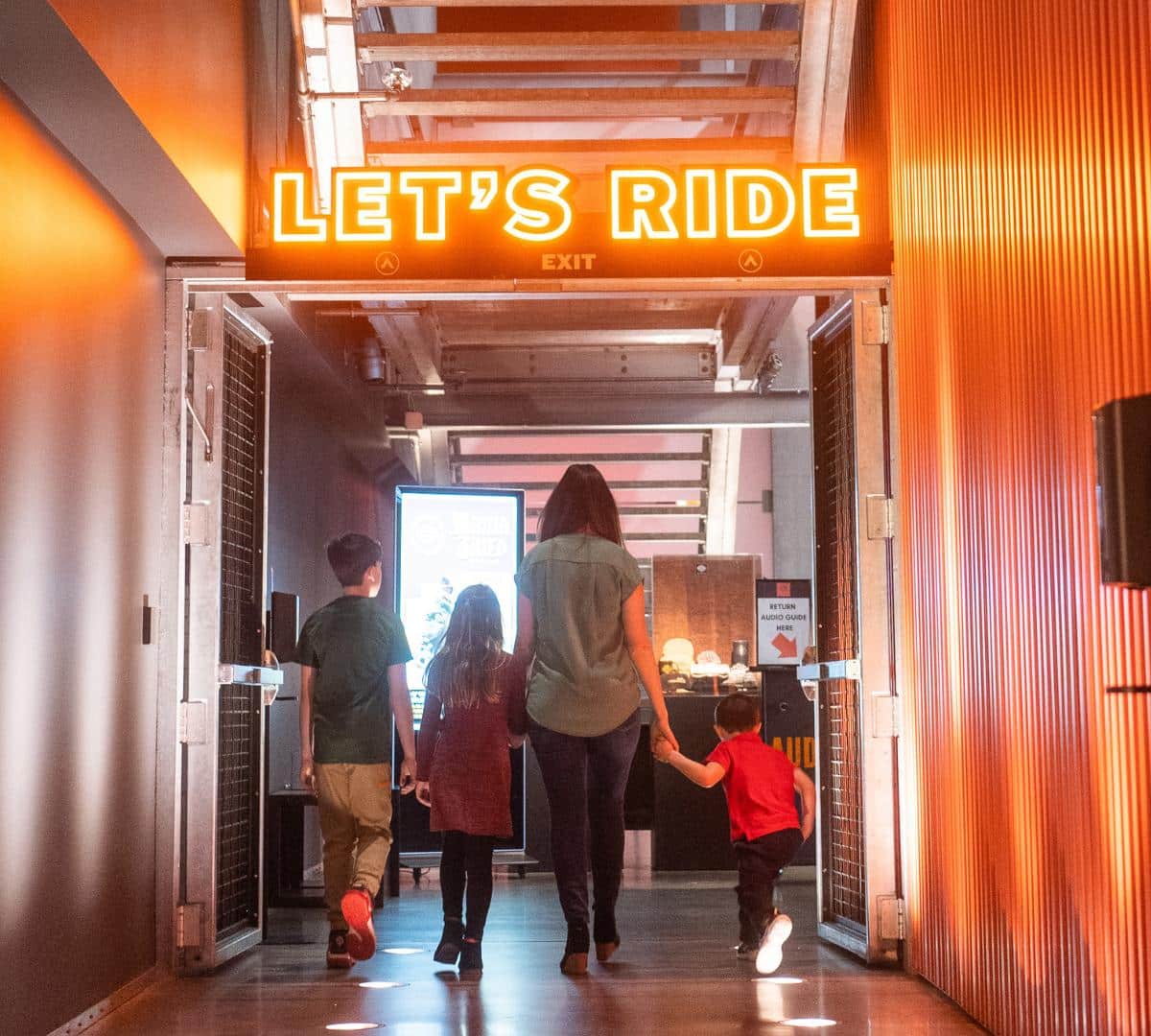Are you ready to dive into a colorful and vibrant celebration that’s close to the hearts of millions of people?
Cinco de Mayo, observed on May 5th, is a day rich in history, culture, and pride, especially for the Mexican people and those of Mexican descent living around the world.

From the bustling streets of Mexico City to the historic town of Puebla, this holiday honors an unexpected victory, celebrates Mexican heritage, and has inspired a variety of fun traditions and delicious foods.
Join us as we explore some fascinating and fun facts about Cinco de Mayo, discover traditional activities, and answer some common questions about this spirited day!
- “Fifth of May”: Cinco de Mayo translates to “Fifth of May” in Spanish, which is the date this holiday is celebrated every year.
- Not Independence Day: Despite popular belief, Cinco de Mayo is not Mexico’s Independence Day. Mexican Independence Day is actually celebrated on September 16th.
- El Día de la Batalla de Puebla: Mexicans don’t typically call the holiday “Cinco de Mayo”. It is sometimes called El Día de la Batalla de Puebla (The Day of the Battle of Puebla) in Mexico.
- Battle of Puebla: Cinco de Mayo commemorates the Mexican Army’s victory over the French Empire at the Battle of Puebla, on May 5, 1862.
- Franco-Mexican War: The Battle of Puebla was part of the Franco-Mexican War, which lasted from 1861 to 1867.
- Zaragoza: The Mexican forces were led by General Ignacio Zaragoza, and their victory is celebrated as a symbol of Mexican resilience and patriotism.
- An Unlikely Victory: The battle was significant because the Mexican army was outnumbered and less equipped than the French forces but won the battle against all odds. The French army, considered the strongest in the world at the time, was defeated by the Mexican army at Puebla.
- A Hero’s Honor: The city of Puebla was renamed Puebla de Zaragoza to honor General Zaragoza.
- Puebla: Puebla, Mexico, is where the famous Battle of Puebla took place. Today, it’s one of the places with the most vibrant Cinco de Mayo celebrations, with military parades and reenactments of the battle.
- School’s Out for Cinco de Mayo in Mexico: While Cinco de Mayo isn’t a federal holiday in Mexico, children get a day off from school to commemorate the occasion
- United States: The celebration of Cinco de Mayo in the United States was officially recognized in 1933, thanks in part to President Franklin D. Roosevelt’s “Good Neighbor Policy.” This policy aimed to foster better relations with Latin American countries.
- Fiesta Broadway: Los Angeles, California, hosts the largest Cinco de Mayo celebration in the world, known as Fiesta Broadway.
- Avocados: More avocados are consumed on Cinco de Mayo in the United States than any other day, including the Super Bowl. Over 81 million avocados are consumed in the United States on Cinco de Mayo, according to the California Avocado Commission.
- Mariachi: The holiday is often celebrated with mariachi music, which features violins, guitars, trumpets, and sometimes harps and accordions, wearing traditional Mexican charro suits.
- Mole Poblano: Mole Poblano is considered the official dish of the holiday because it is believed to have originated in Puebla, the site of the Cinco de Mayo battle. Traditional Mexican chocolate is often used in the mole poblano sauce.
- Paper Picado: Papel Picado, which is artfully cut tissue paper, is used to decorate during Cinco de Mayo. It represents the wind and the fragility of life.
- Mexican Flag: The colors of the Mexican flag—red, white, and green—symbolize unity, religion (faith), and independence and are prominently displayed during Cinco de Mayo celebrations.
- Texas: General Ignacio Zaragoza, who led the Mexican forces to victory, was born in what is now the state of Texas.
- Skydiving: In certain parts of the United States, Cinco de Mayo is marked with unique celebrations, such as skydiving events adorned with Mexican flags.
- Caymen Islands: Even the Cayman Islands get into the spirit with their own Cinco de Mayo air guitar competition.
- Olvera Street: In Los Angeles, Cinco de Mayo is celebrated with a big festival on Olvera Street, which includes traditional music, dancing, and food.
- Silver: During the time of the Battle of Puebla, the Mexican government was so poor that soldiers were often paid in silver.
- After the war: After the war, some French soldiers stayed in Mexico and integrated into Mexican society, marrying local women and starting families.
- Pastry War: Before the Franco-Mexican War leading to Cinco de Mayo, there was the “Pastry War” in 1838, where a French pastry chef’s complaint about Mexican officers looting his shop led to a military conflict between France and Mexico.
- Mexican Hat Dance: The Mexican Hat Dance, known as “El Jarabe Tapatío” in Spanish, is not only a popular folk dance but also the national dance of Mexico. At one point, it was considered a symbol of rebellion and was banned by the authorities? The dance originated in the 19th century and quickly became popular among the Mexican people for its lively music and spirited steps. However, due to its roots in native Mexican culture and its performance often mocking the Spanish élite and authority, it was seen as a form of social and political protest. As a result, the Mexican government banned the dance during the early 20th century, fearing it would incite rebellion.
FAQ
Q: Is Cinco de Mayo the Mexican Independence Day?
A: No, Cinco de Mayo is not Mexican Independence Day. It’s a common misconception, especially outside of Mexico. Cinco de Mayo actually commemorates the Mexican Army’s victory over French forces at the Battle of Puebla on May 5, 1862. This victory holds significant historical value because it symbolizes Mexico’s resilience and strength against a powerful foreign invader, despite being heavily outnumbered and under-equipped.
Mexican Independence Day is celebrated on September 16th and marks the day in 1810 when Mexico began its fight for independence from Spanish rule. The call to arms is known as “El Grito de Dolores,” named after the town of Dolores where the priest Miguel Hidalgo y Costilla made his famous cry for freedom. This day is considered Mexico’s most important national holiday and is celebrated with fireworks, parties, food, and parades throughout the country.
While both holidays are rooted in Mexico’s fight for sovereignty and freedom, they commemorate different events and have their own unique traditions and ways of celebration. Cinco de Mayo has become a day to celebrate Mexican heritage and culture, especially in the United States, where it’s observed with festivals, parades, and educational events highlighting Mexican history and traditions. In contrast, Mexican Independence Day is a deeply patriotic holiday observed with much fervor within Mexico itself.
Q: Why is the town of Puebla significant to Cinco de Mayo?
A: Puebla is where the famous Battle of Puebla took place. It’s the heart of Cinco de Mayo celebrations in Mexico, with special events, reenactments, and parades that honor this historical victory.
Q: Can you find Cinco de Mayo celebrations outside of Mexico?
A: Absolutely! In the United States, cities like Los Angeles and San Antonio host large festivals with live music, Mexican food, and crafts. Even in parts of Latin American countries and beyond, people celebrate to honor Mexican heritage and culture.
Q: What are some traditional ways to celebrate Cinco de Mayo?
A: Families can engage in a variety of activities, from crafting papel picado and piñatas to learning the Mexican Hat Dance (Jarabe Tapatío). Cooking traditional Mexican food and enjoying mariachi music are also popular ways to celebrate.
Q: How is Cinco de Mayo observed in Mexico City?
A: While the largest celebrations occur in Puebla, Mexico City also marks the day with cultural events, delicious food offerings, and educational activities about Mexican history and the significance of the holiday.
Q: Is Cinco de Mayo just a big party?
A: While many enjoy the festive aspects of Cinco de Mayo, it’s also a day of remembrance and pride in Mexican history and the triumph of the Mexican army over French forces. It’s a time to celebrate Mexican culture, traditions, and achievements.
Q: What does Cinco de Mayo actually celebrate?
A: Cinco de Mayo commemorates the Mexican Army’s unlikely victory over French forces at the Battle of Puebla on May 5, 1862. It’s a celebration of Mexican resilience and determination.
Q: How do children in Mexico celebrate Cinco de Mayo?
A: In Mexico, especially in Puebla, children participate in school parades and history lessons about the battle. Many also enjoy traditional music and dance performances, and families gather to enjoy Mexican dishes.
Q: Why do people in the United States celebrate Cinco de Mayo?
A: For many Mexican Americans, Cinco de Mayo is a day to express pride in their heritage and culture. It has also become a broader celebration of Mexican culture and traditions, including food, music, and dancing, for a wide audience.
Q: What are some traditional foods to enjoy on Cinco de Mayo?
A: Traditional Mexican foods like mole poblano, tacos, enchiladas, and churros are popular. Avocados are in high demand for guacamole, a favorite dish for Cinco de Mayo festivities.
Q: How can non-Mexicans celebrate Cinco de Mayo respectfully?
A: Learning about the history of Cinco de Mayo and Mexican culture is a great start. Celebrating respectfully includes engaging in authentic cultural experiences, supporting Mexican businesses, and avoiding stereotypes.
Q: What’s the significance of the Mexican flag and its colors during Cinco de Mayo?
A: The flag of Mexico, featuring green, white, and red, symbolizes hope, purity, and the blood of national heroes. It’s prominently displayed during Cinco de Mayo to honor Mexican heritage and patriotism.
Q: Are there any unique Cinco de Mayo traditions in different states or countries?
A: Yes, celebrations vary widely. In some U.S. states, there are large parades and festivals, like Fiesta Broadway in Los Angeles. Internationally, places like the Cayman Islands and Malta have their own unique celebrations, reflecting the global appeal of Cinco de Mayo.
Q: How did Cinco de Mayo help shape Mexican-American identity?
A: For Chicano activists in the 1960s, Cinco de Mayo became a way to celebrate Mexican-American culture, history, and identity. It’s a day for Mexican Americans to express pride in their heritage and contribute to a diverse American cultural tapestry.
Q: What are some fun Cinco de Mayo crafts for kids?
A:Making papel picado, colorful tissue paper banners, is a fun activity. Kids can also enjoy crafting their own piñatas, decorating sombreros, or creating Mexican flag-inspired art projects.
Q: What role does music play in Cinco de Mayo celebrations?
A: Music is central to Cinco de Mayo festivities, with mariachi bands, traditional Mexican music, and folkloric dance performances. Music brings the spirit of the celebration to life, honoring Mexican heritage.
Q: How has Cinco de Mayo impacted international views on Mexican culture?
A: Cinco de Mayo has played a significant role in promoting Mexican culture globally, showcasing the country’s rich history, traditions, and resilience. It’s a day that invites people worldwide to explore and appreciate the depth of Mexican culture.
Q: What are some misconceptions about Cinco de Mayo?
A: A common misconception is that Cinco de Mayo is Mexico’s Independence Day. Another is that it’s just a day for parties and margaritas, overlooking its historical and cultural significance.
Conclusion
Cinco de Mayo offers a wonderful opportunity for kids and families to learn about and celebrate Mexican culture, history, and traditions. From engaging in traditional crafts to exploring the flavors of Mexican cuisine and understanding the historical significance of the day, there’s so much to discover and enjoy.
Cinco de Mayo is a day filled with vibrant colors, lively music, and a profound sense of cultural pride. Whether you’re exploring the historical streets of the Mexican city of Puebla, crafting with your kids at home, or enjoying the flavors of traditional Mexican food at a local restaurant, there’s a rich tapestry of history and tradition to appreciate
By celebrating Cinco de Mayo, we not only honor an important historical event but also embrace the rich cultural tapestry that Mexico brings to the world.
Happy Cinco de Mayo!
Related Posts:
100 Fun Food Facts to Surprise Your Kids
50 Spring-Inspired Fun Facts & Trivia For Kids
50 Fun Thanksgiving Facts For Kids
50 St Patricks Day Facts For Kids
Calie Herbst, Editor-in-Chief of Milwaukee With Kids, has spent over a decade combining her experiences as a parent of three to create a hub for Milwaukee’s family adventures.
Her decade-long teaching career in Milwaukee Public Schools and academic background, including a Master’s in Teaching from Marquette University and dual B.A.s in Sociology and Spanish from the University of Wisconsin – Madison, fuel her passion for inclusive and engaging family content.
Calie is also a recognized voice in local media, contributing to WISN Channel 12 News, WTMJ Wisconsin Morning News, Fox 6’s Real Milwaukee, and B93.3.
Discover more about Calie’s journey and editorial approach on her About Page and Editorial Policy Page.









